New beds and a hot dry spell
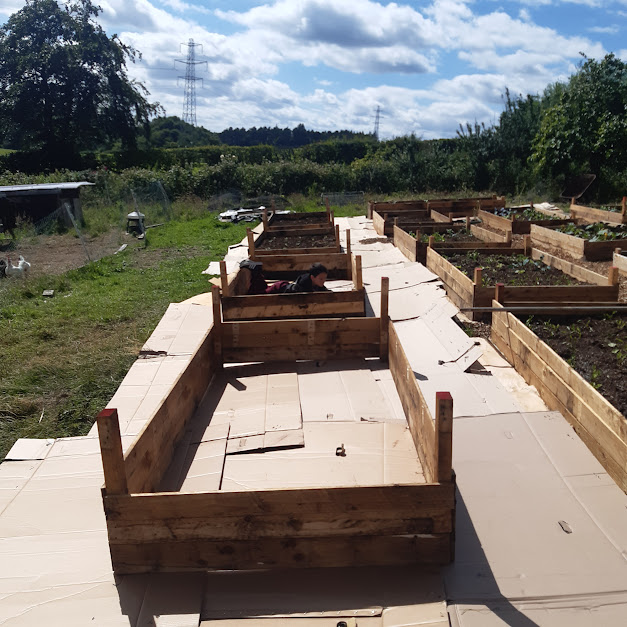
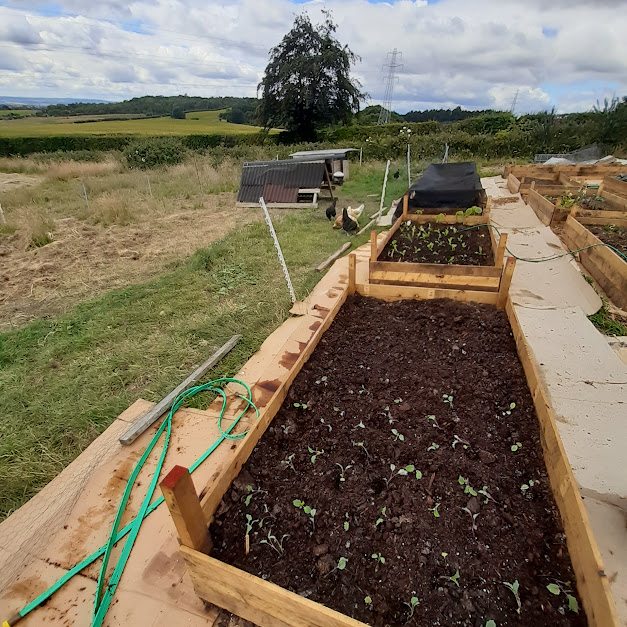
Row five has mostly Cardoons, Mooli, Pak Choi and Kohlrabi. Watering is now a daily job, as the beds dry out in the sun, with the constant breeze has the biggest impact.
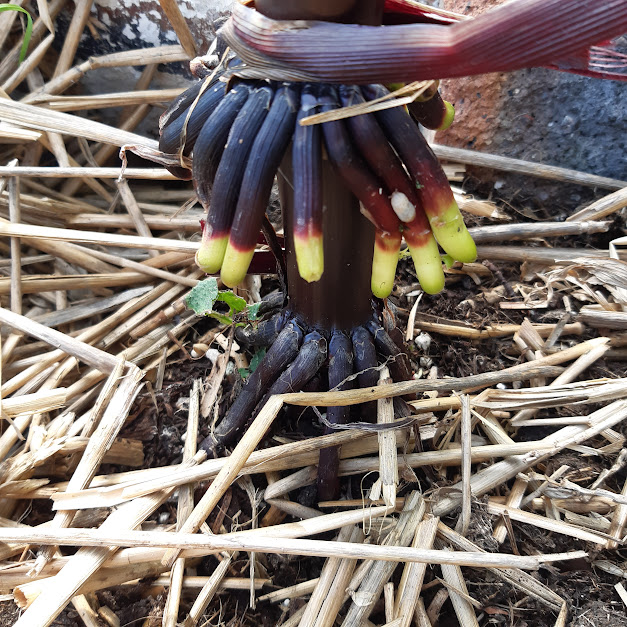
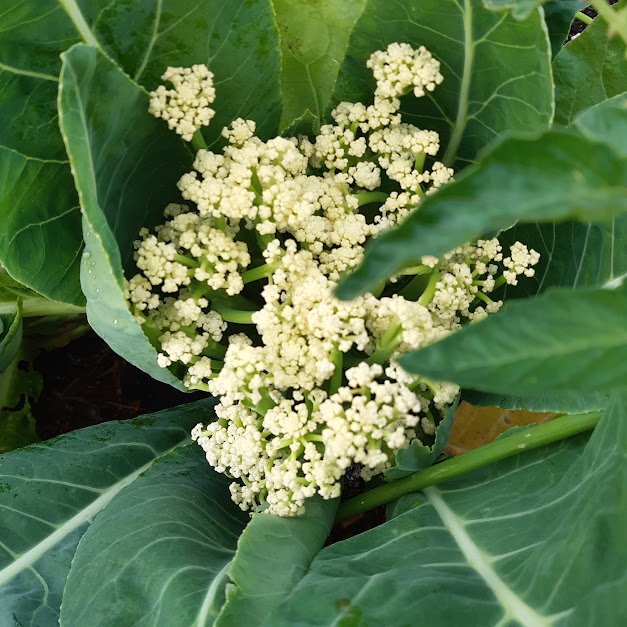
Cauliflowers go to flower quickly in the heat. The heads expand and then will turn into flowers and then seed. I may let this one go to seed.
The purple corn has bracing roots forming even though it’s in the poly tunnel protected from any wind. They are rather aracnid-esk.
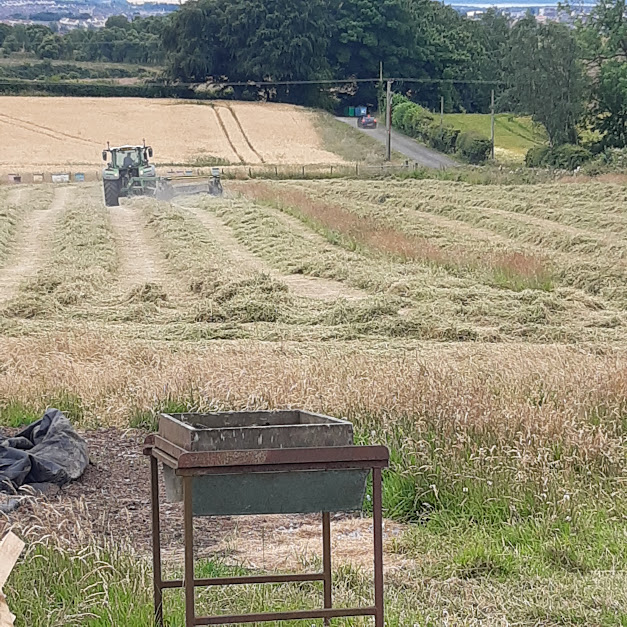
The farmers cut and left the field and it’s now crispy dry organic hay.
Summer veggies and more beds
6 more beds have appeared and five filled with compost and seedlings. It’s going to be an organic production and needs to ramp up as the economic pressure mounts on households unused to facing food poverty.
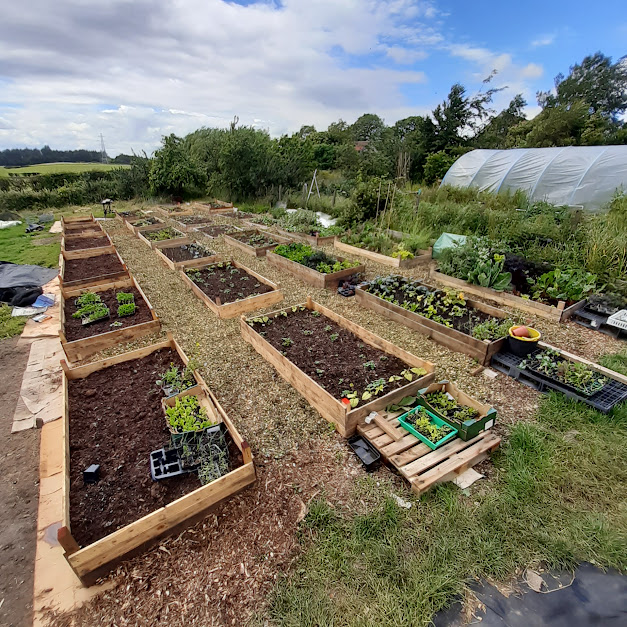
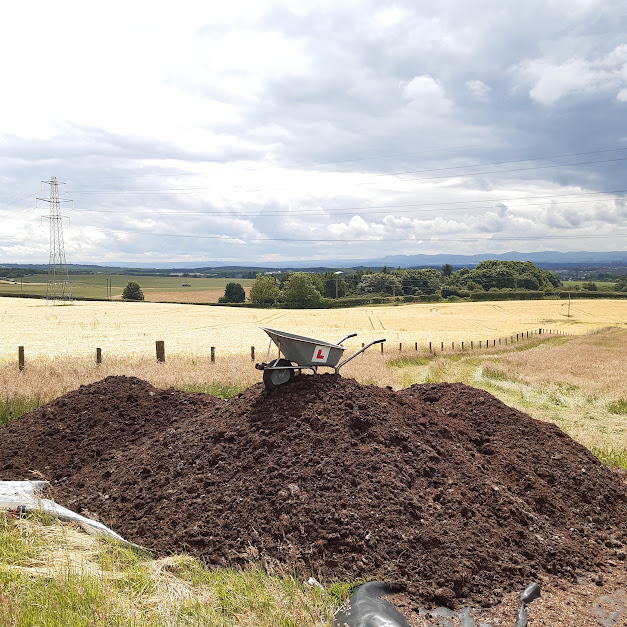
A 12 tonne load of organic compost has just been delivered that will more beds can be constructed and filled. It is my hope that another eight 4’x8′ beds can be filled ready for the next batch of seedlings. Carrots, beet and swede will be direct sown, as they are pretty good staples. As plants are harvested seedlings replace them. The plan is to have seedlings, for example, that take 4 or 5 weeks to harvest from the time they are planted out. With 5 beds each planted up a week apart will mean at least 30 lettuce a week until the weather slows that down.
Three donations have recently been made to eats and disappear quickly which is a positive sign. These veggies are organic and nutritious.
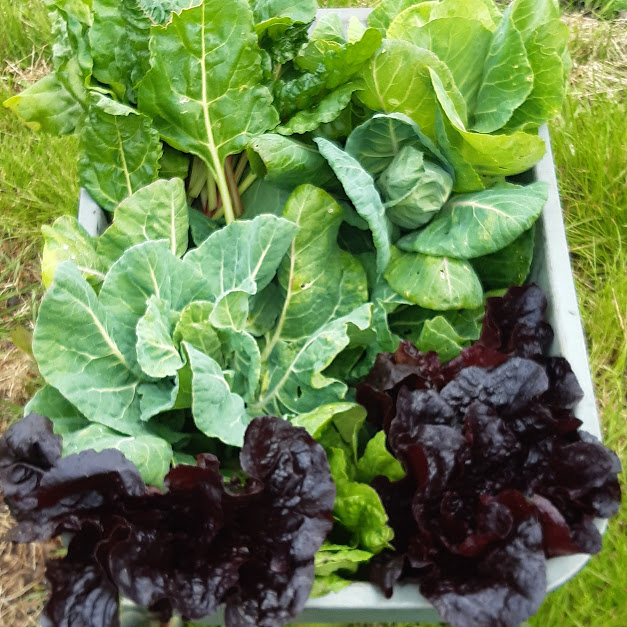
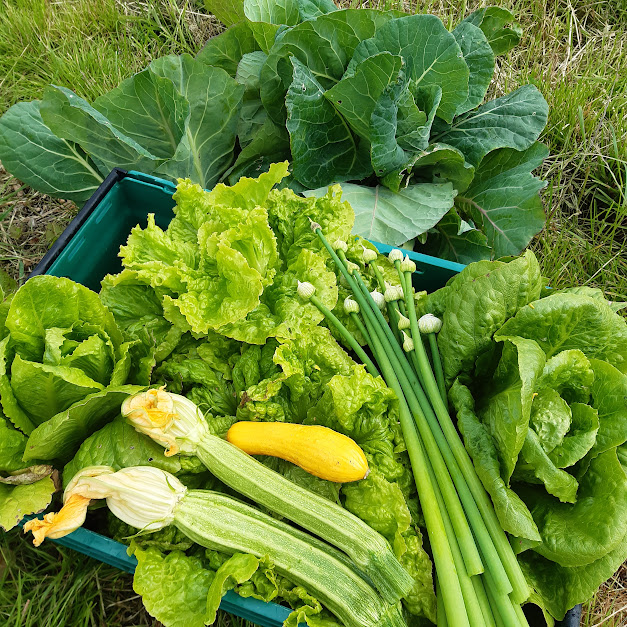
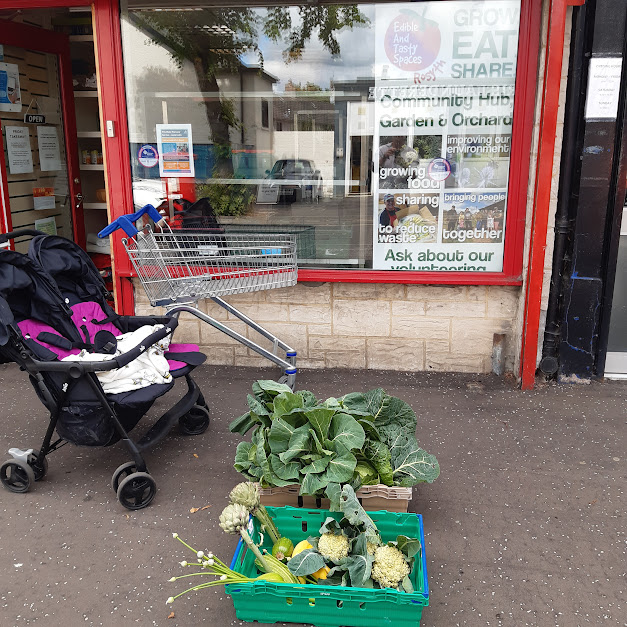
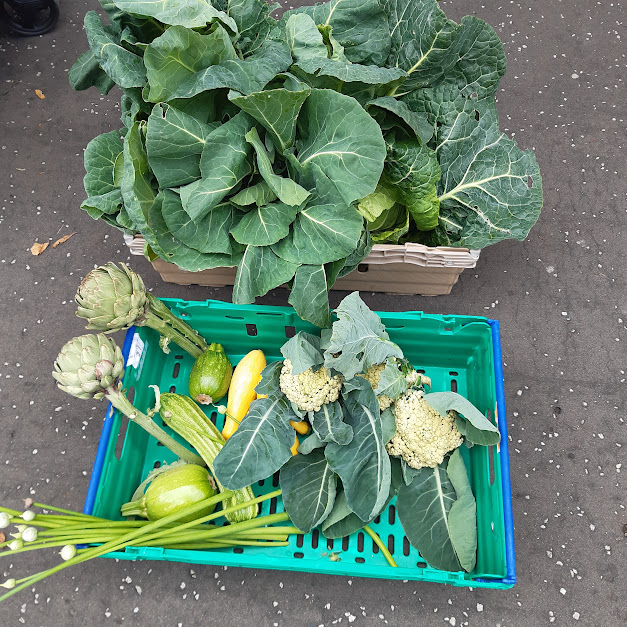
Children grew 60 lettuces from six beds!

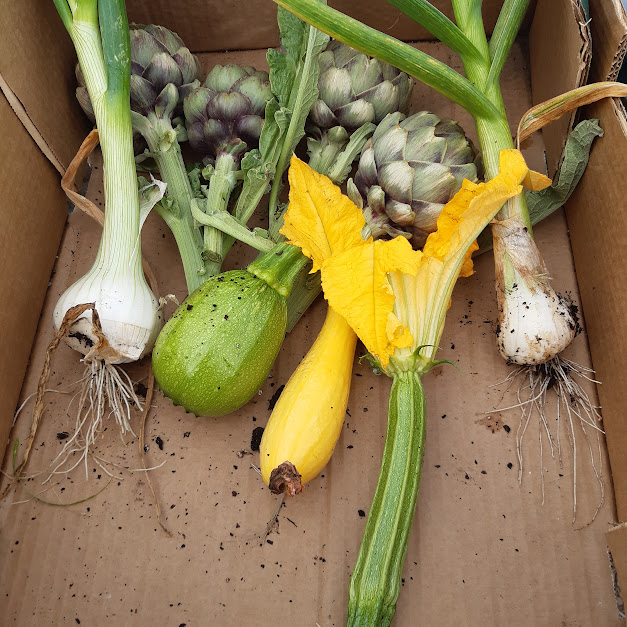
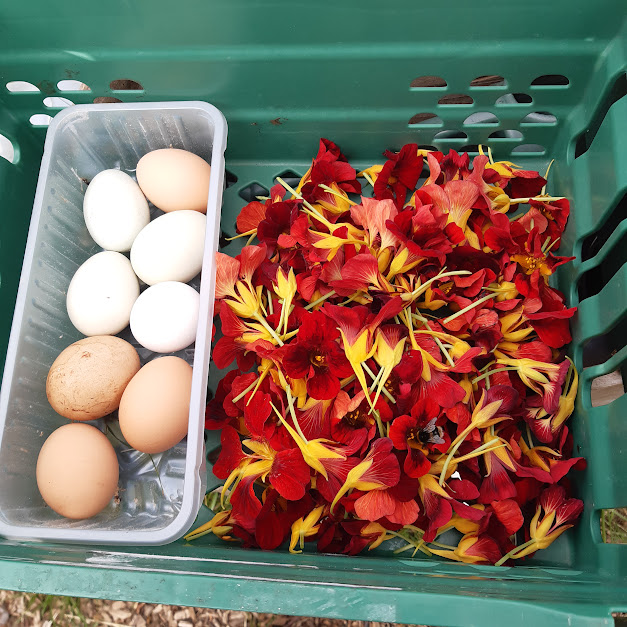
The School term finishes on Friday so the idea was to let the kids take home some of their produce. Lettuce was the only obvious thing they could take and 60 were harvested from the beds. Photos of excited kids are shared with parents and other pupils; such a shame I can’t share them with you.
Last week nasturtiums were tasted and not everyone had a flower so I harvested my bush in the poly tunnel. Tasting is encouraged and if it was not to their liking, could be ‘spat out’ as we were outside. Success was tasting food, even if you did not like it.
I showed them garlic, onion and three types of courgette from my garden as well as the different coloured eggs.
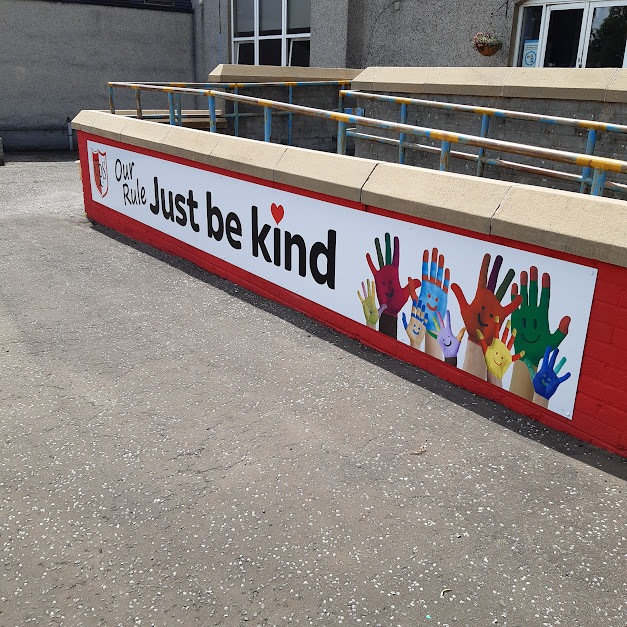
The school has one rule. “Just be kind”. I wonder if would work in the big bad self-centred world we live in now. I think it would make a huge difference.
Organic vegetables donated to Eats Rosyth
This is the first donation in 2022 to Eats Rosyth; cabbage, lettuce, crookneck (yellow) and romanesco (green ridged) courgettes and shallot scapes used in an omelette for the volunteer’s lunch. It was delicious. Bravo Brenda👩🍳
Have you tried scapes? They are onion/shallot/garlic flowers and the stems are used like spring onions. They are delicious to eat raw in a salad or cooked. Before tasting my first one last year, I thought they would taste like overpowering onion; there is an onion flavour but it’s sweet and delicious. All the nutrients going to the flowers to make seeds are in the stems so it’s really good for your health.
What is noticeable about the cabbage is the thickness of the leaves, they feel turgid and fat although not tough or stringy in the slightest. Again the taste difference is remarkable to mass produced ‘industrial’ cabbages. Slug damage is minimal because I spray with onion and garlic concentrate that slugs seem to have an allergic reaction to.
Before now, eggs, cabbages, spinach and lettuce have been given away to volunteers at The Sanctuary Garden.
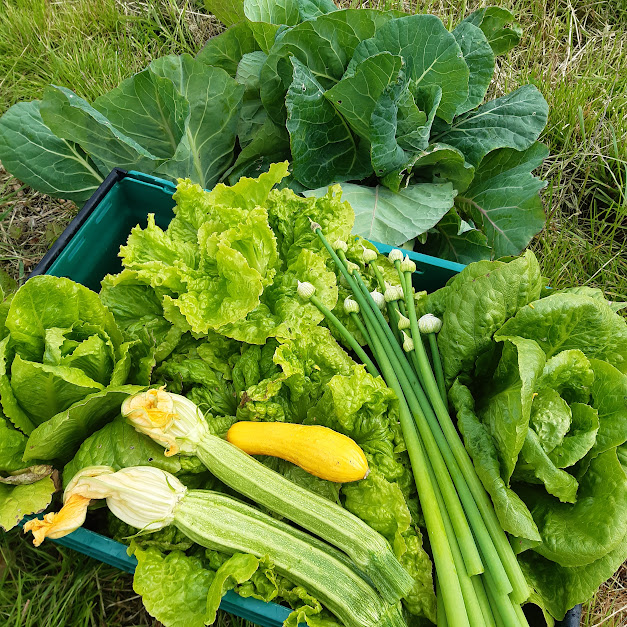
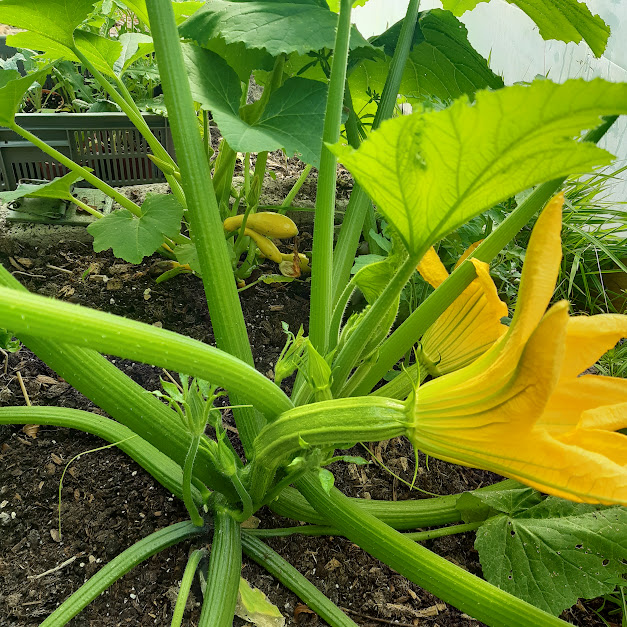
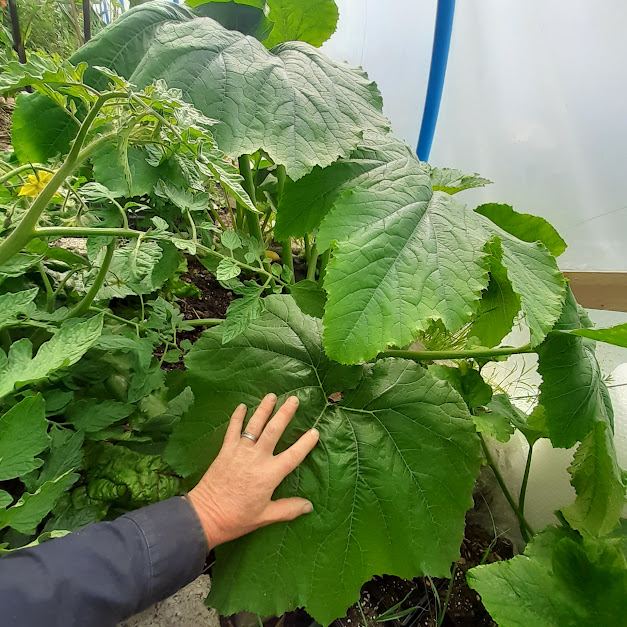
The Romanesco courgette in the foreground is a monster, the leaves dwarf my hand. That end of the poly tunnel has a jungle feel, all I need is a tiger.
How to build a raised bed from pallets
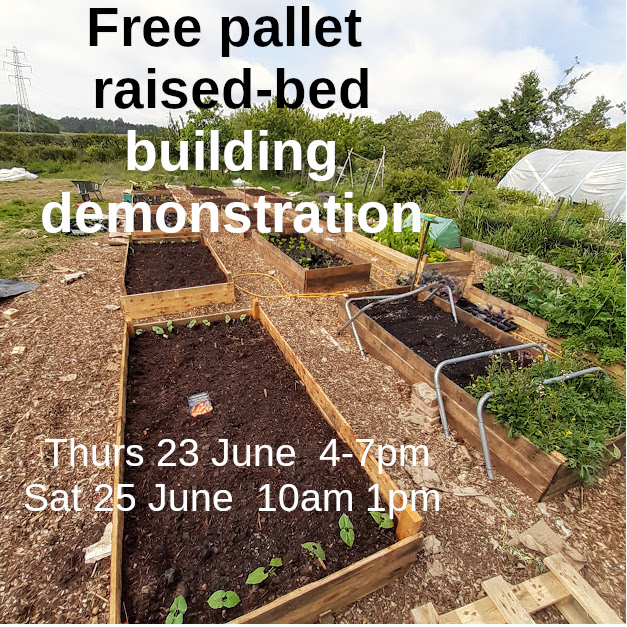
The aim is to show how easy it is to make a bed. Finding a the right pallet is the hardest part of making this bed. Vinegar and oil are the only materials and cost a couple of pounds.
This is a free course and donations are welcome to help pay for materials and compost.
The only specialised tool I use is a pallet breaker. A claw hammer to pull nails out and knock them back in, a hand saw, mini roller and tray to oil the wood. Materials are vegetable oil and vinegar, mixed about 4:1 the cheapest you can get. A litre or so does one 8’x4′ raised bed. Optional are galvanised nails if you don’t want to reuse the ones pulled out of the pallet. You’re welcome to help, watch and comment or just visit the garden. We have free range chickens in a run so dogs need to be well behaved and obedient.
It takes less than an hour to build a bed and the process will be repeated so you don’t need to be there for the start. The forecast is sunshine and showers at the moment but if it’s absolutely pouring it will be put on hold.
Parking and access.
The road up to the garden is unpaved and has as many potholes as Kingseat main road. There are blind corners and 12 tonnes of tractor use these roads; turn down the radio and keep your eyes peeled.
Please park around the houses and don’t block roads as large tractors and trailers use it all the time.
The ground is uneven so care is required by all. It’s not really suitable for wheel chairs or ambulatory challenged.
Coffee and tea will be available for self service. Be aware there are no toilet facilities except in emergencies.
Treetop Family Nurture Center Rosyth
Something special happens when you show youngsters how plants grow, explain how to be gentle with the seedlings and letting them push them in the soil. Some are slightly damaged, some in the wrong place but it does not matter. The importance is that they did it. Their focused enthusiasm is remarkable; they learn spacing, sizes, colours, caring, taking turns at planting, speaking up and asking all kinds of questions (some related to plants).
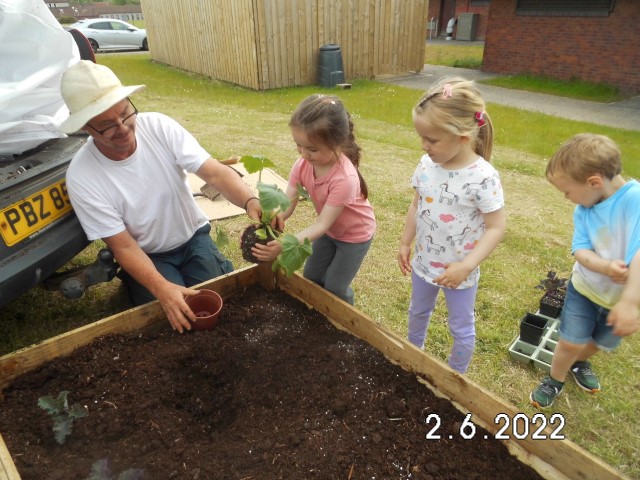
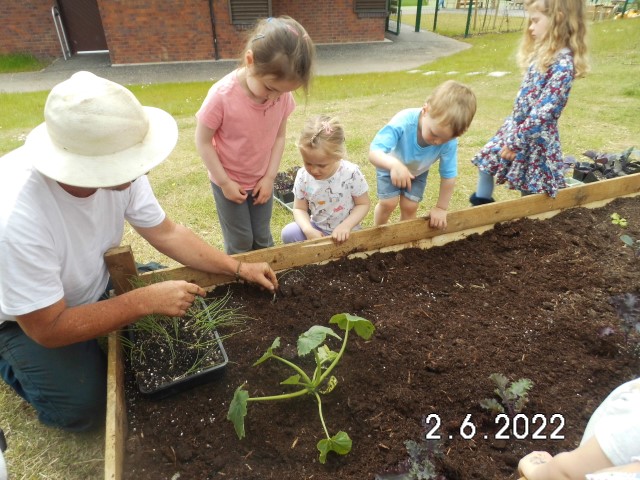
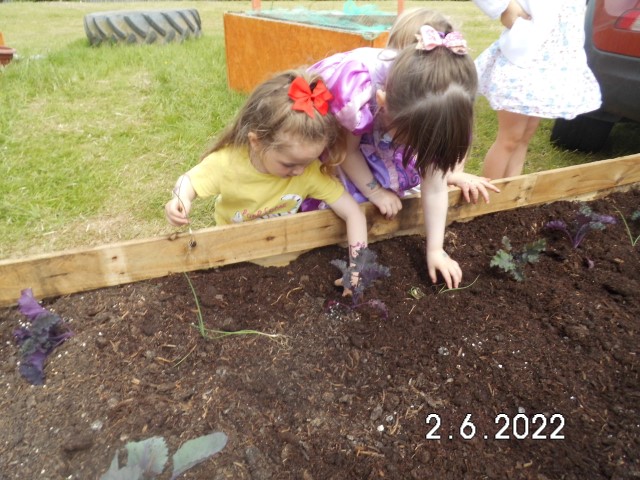
Planting helps deal with the unexpected; when a pot is tipped upside down, the soil can collapse around the root or remain solid. Keeping the conversations positive, encouraging and complimentary is vital in particular for the children who fear failure to have a go.
The excitement when I returned to fill the bed made on the Jubilee ‘day’ was obvious. Pots were collected, and a fleece put over to protect the plants from pigeons. Now that The Sanctuary Garden has more pallets and expecting more compost, another donated bed will be installed shortly with seedlings
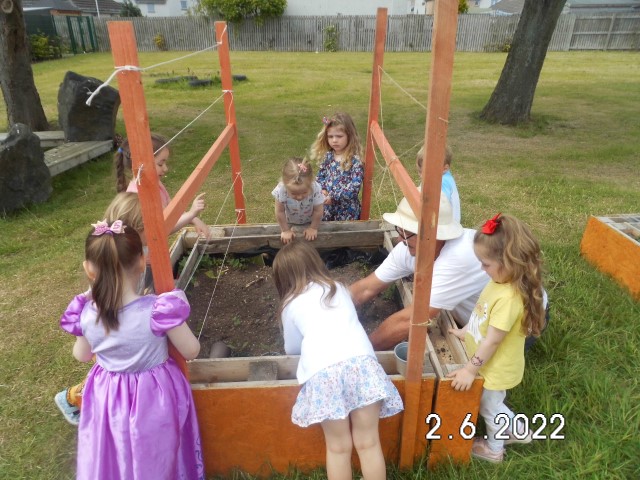
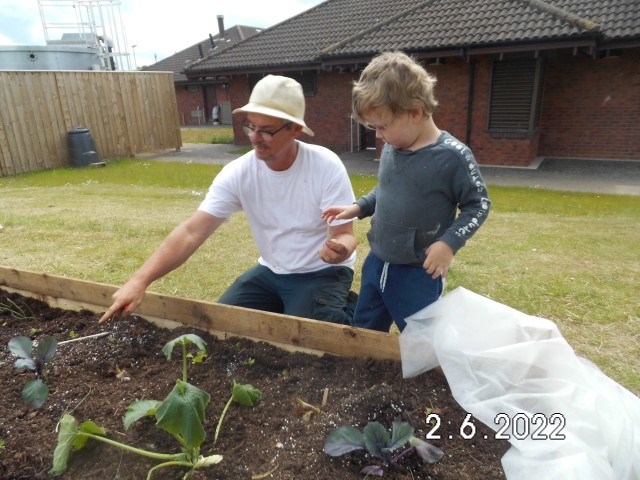
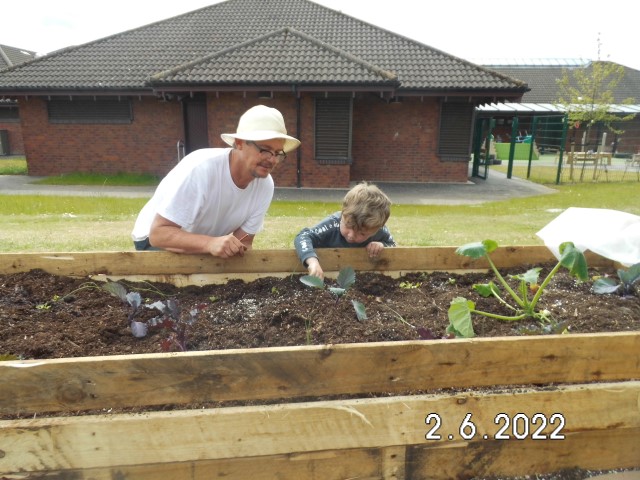
These photos were taken by a member of staff, approval sought and send to me with permission to publish them.
In as little as a month
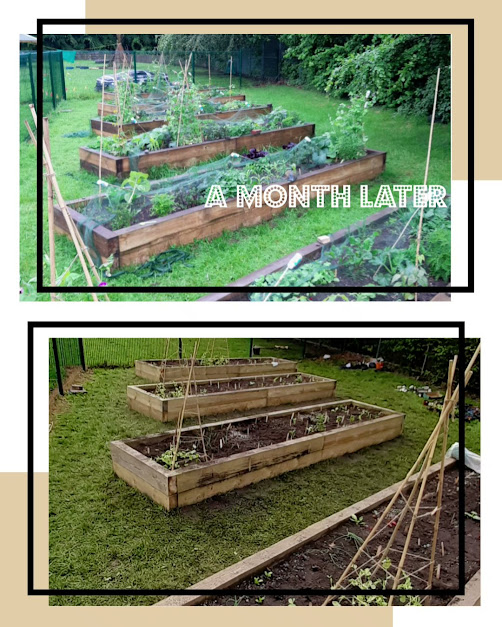
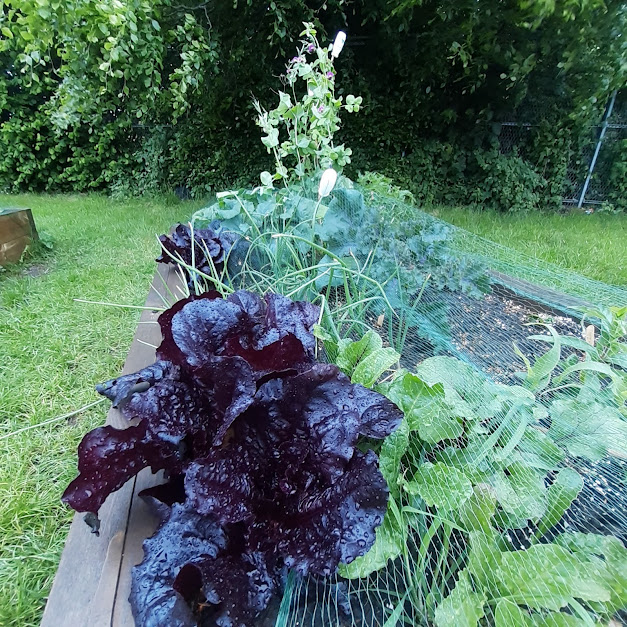
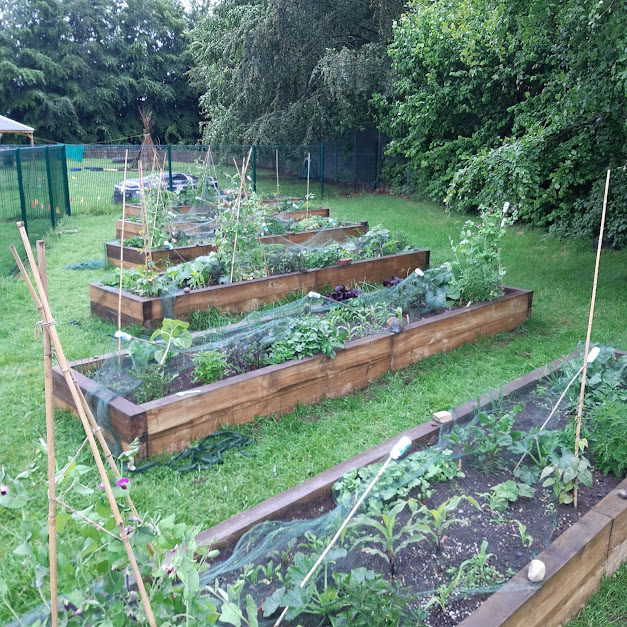
The children at Carron Primary near Falkirk were enthusiastic at planting and most, had no idea what the seedlings would grow into. In less than a month of watering and spraying with ‘onion and garlic fermented plant juice (FPJ)’ this is the result. Purple pea pods have formed, not quite filled out yet, lettuces have exploded, corn is nearly a foot high, beans are reaching for the sky and seeds have germinated and looking good.
Seedlings are being planted up for the next cycle; filling spaces after a harvest and keeping the beds filled keeping roots in the soil that feed micobes, that feed plants nutrients that keep us humans healthy.
This is a project all schools could be involved with, it’s not just about growing veg, it’s touching the soil, relinquishing control as it’s messy and in the lap of the ‘Gods’ and most of all, appeals to those who struggle with the ‘school system’. This garden has become a place of peace and tranquility with positive stories are recounted by teachers and pupils alike.
If your school is interested in starting a garden, get in touch, it can be started and planted up at any time of the year, this is not just a summer project, there will be plants growing all year round and the startup costs are low.
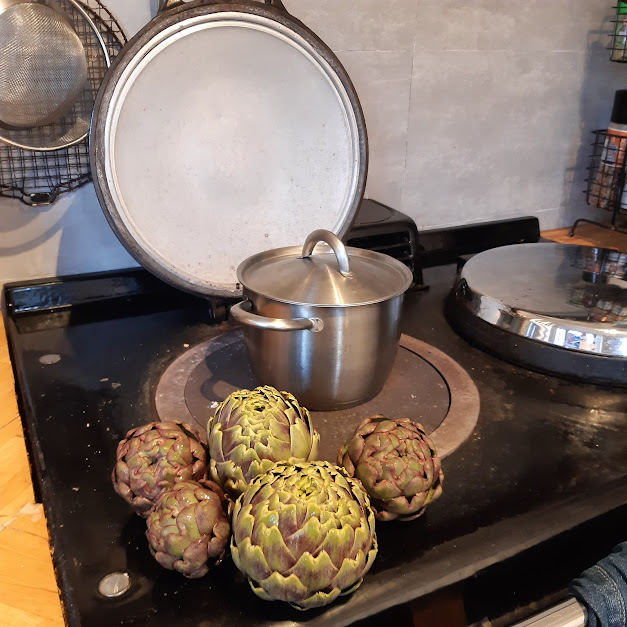
These artichokes are the first crop in year two of the plant’s lives. Of course they are delicious, and the ‘hair’ in the center is so soft, it’s edible; probably picked too early. Apparently if they ‘squeak’ when you squeeze them, they are ready for harvest. The sharp petals scratch against the shell-like petal below making that noise. Boiled for 15 minutes according to Alexa, and consume. My mouth is watering as I write.
Jubilee, more beds and salads
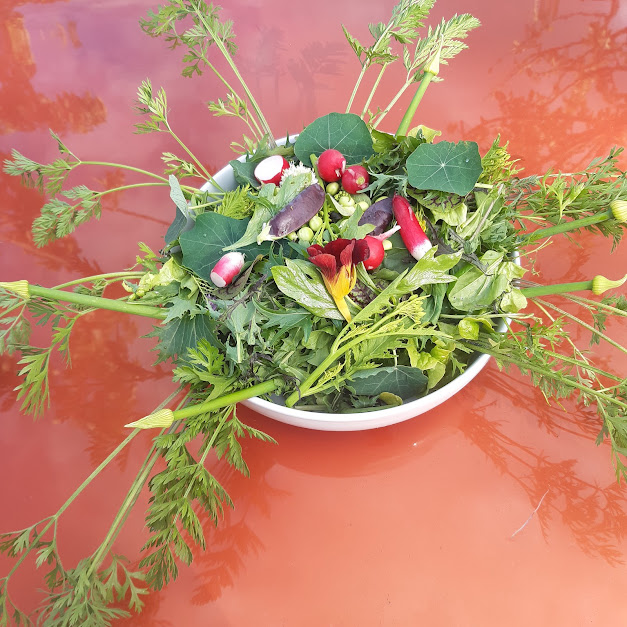

These salads are from the garden, and are delish; Onion Scapes (flowering stems) are like spring onions, loads of lettuce varieties, baby carrots, radish, red and green sorrel, nasturtium leaf and flowers, brassica flowers, peas, spinach and chard. A few marjoram leaves and anything else that’s edible.
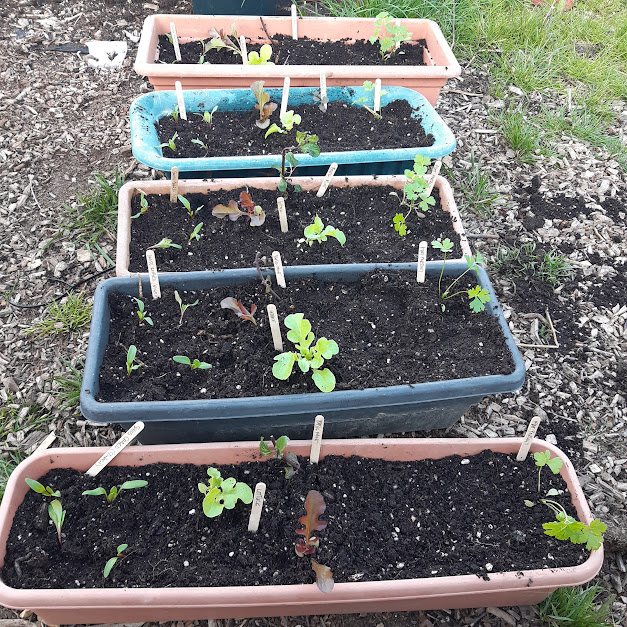
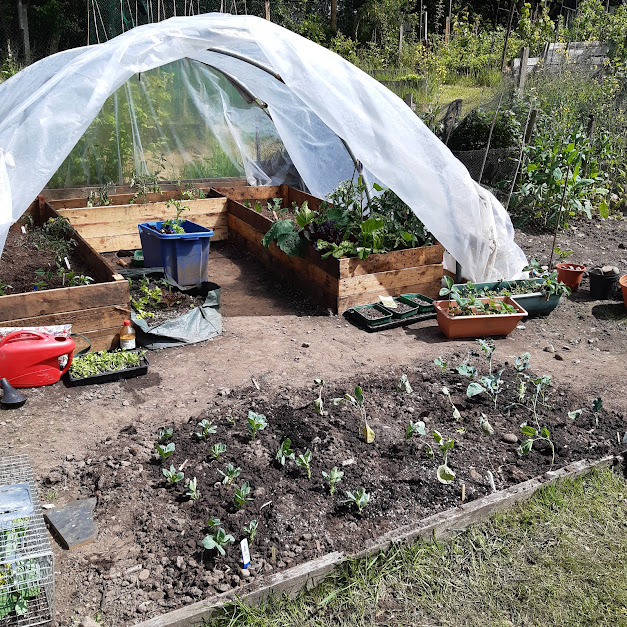
Salad pots given away for donations at Tree Tops Nursery School Jubilee Day. The children planted up their own too. They all picked up pricking out seedlings really quickly. The school now has a new 4’x 8′ bed filled with compost and seedlings.
Julia’s poly tunnel is now complete and planted up. Some of the lettuce and chard planted a month ago are ready for the table. Brassicas and beans have been planted in the outdoor bed.
Working with children is remarkably rewarding; they don’t tend to filter their reactions and excitement.
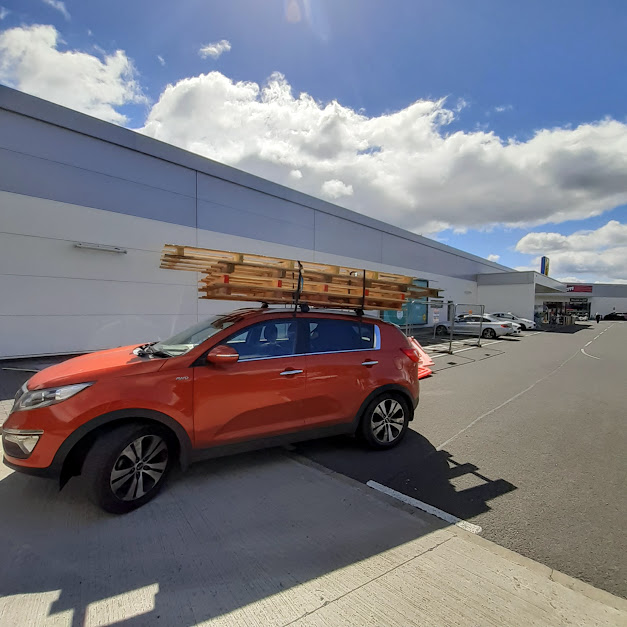
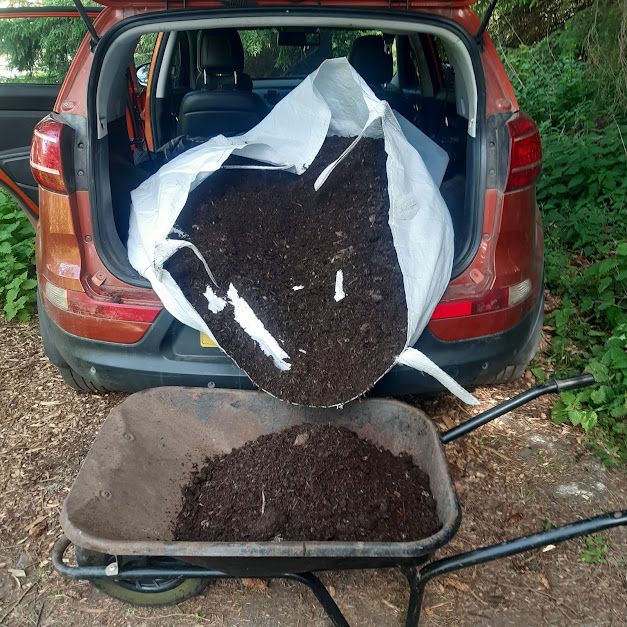
The car is a real workhorse carrying pallets and now with a tonne bag, I can shovel compost into the back rather than loading individual bags that tend to tip over or spill.
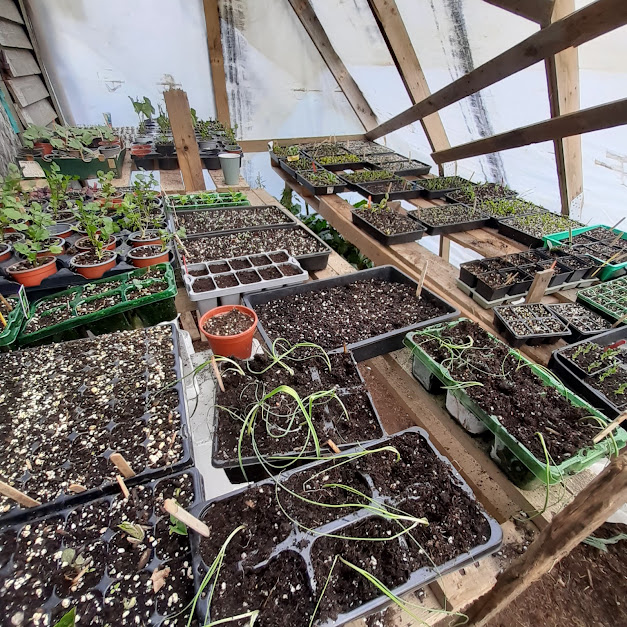
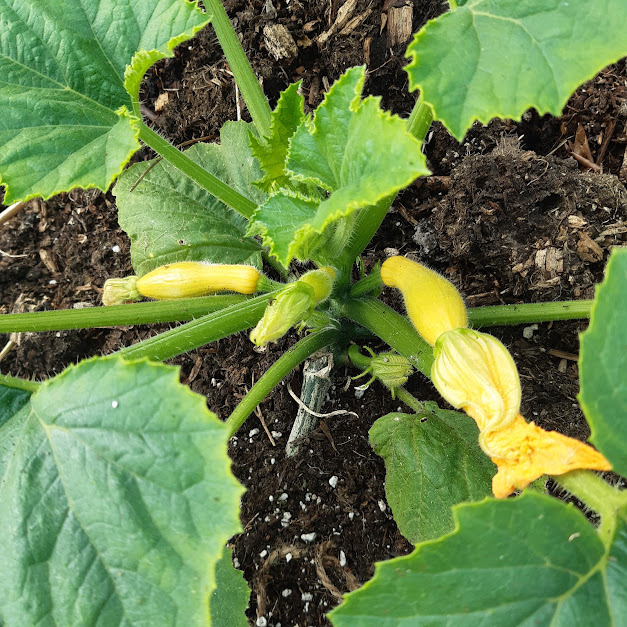
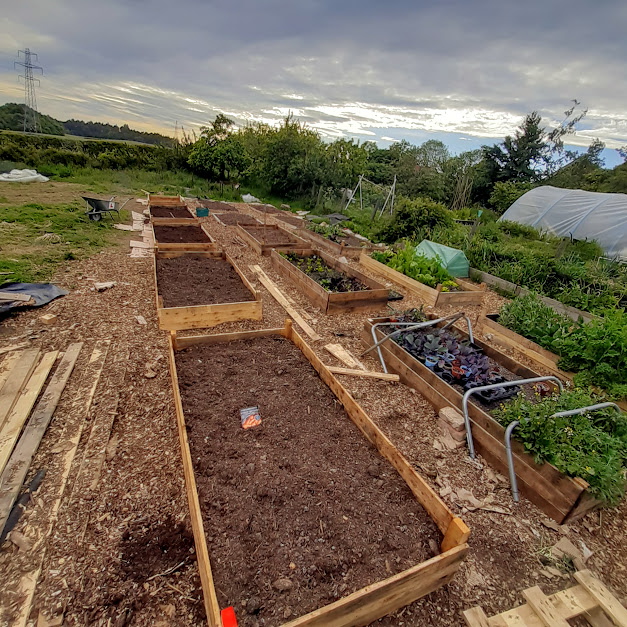
The seedlings are almost ready to planted outside, courgettes are starting to produce fruit and there are 15 new beds 4′ x 8′, nearly 500 sq ft of new growing space.
Working with my community
It has been rewarding to work with schools, nursery schools and individuals who are struggling with where to start growing vegetables.
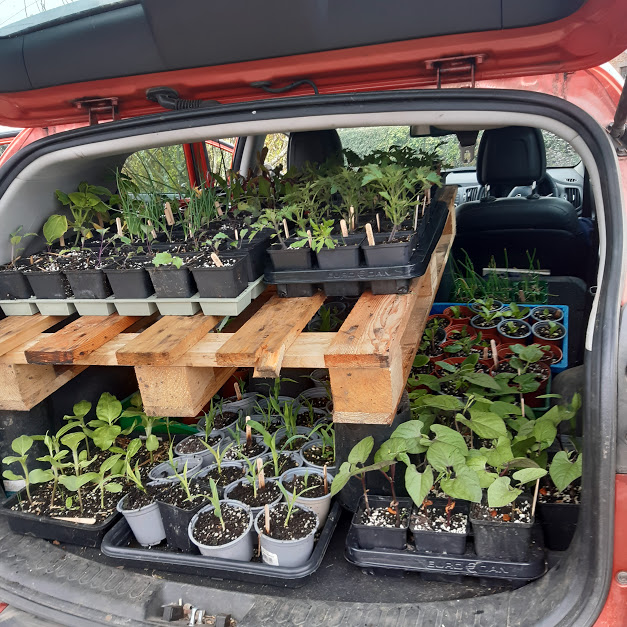
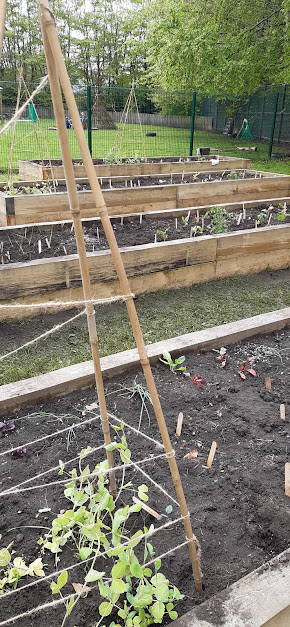
There are six raised beds for six classes and they planted hand fulls of seeds, nearly 500 seedlings, onion sets and potatoes in a day. Square foot gardening was explained, with the only real advice that the tall plants at the back so as not to shaded the wee ones, and the children decided where they wanted to plant seedlings and seeds. Each bed is completely different and the choices were made by each class.
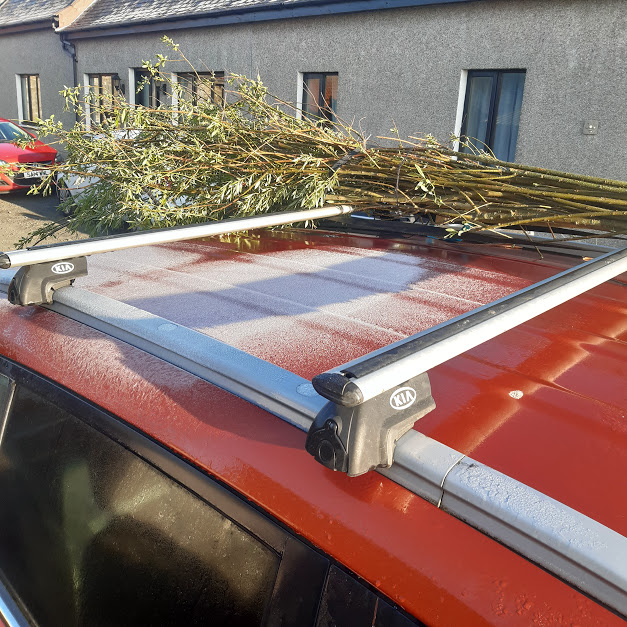
Our septic tank is a reed bed with the last bed, filled with willow that need to be pollarded regularly. My car looked like it had a Harry Potter Broom attached to the roof.
Julia’s family has an allotment and wanted to encourage her to enjoy the outdoors, growing and eating her own veggies. As I had some plastic and left over trampoline hoops it made sense to add a little poly tunnel. Turns out I’d not considered allotment planning permission rules so it was lowered by removing the legs. The Area is the same but requires a bow, to enter if you’re taller than 5′.
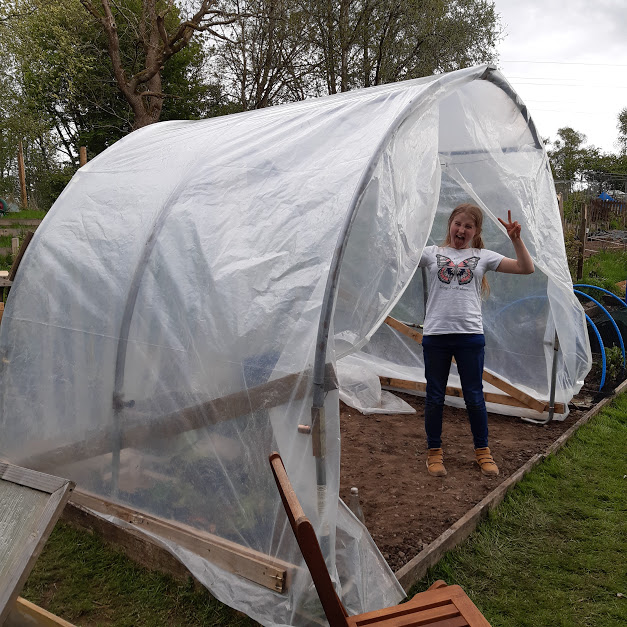
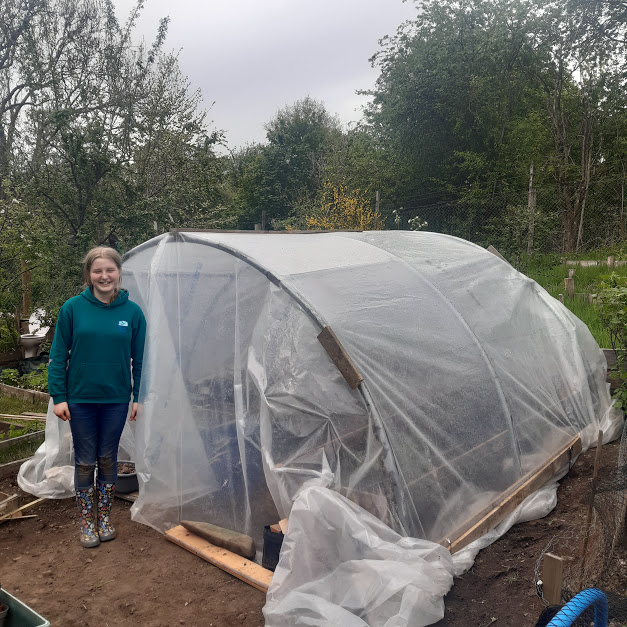
Julia painted the pallet wood with veggie oil and vinegar, the emulsion seems to be better absorbed by the wood and gives a wonderful aroma of fish and chips. Nails were chapped in and screws added to the ends to make up an 8′ x 2.5′ raised bed and 300l of compost added allowing Julia to plant up half the bed. The square foot gardening idea was used here too.
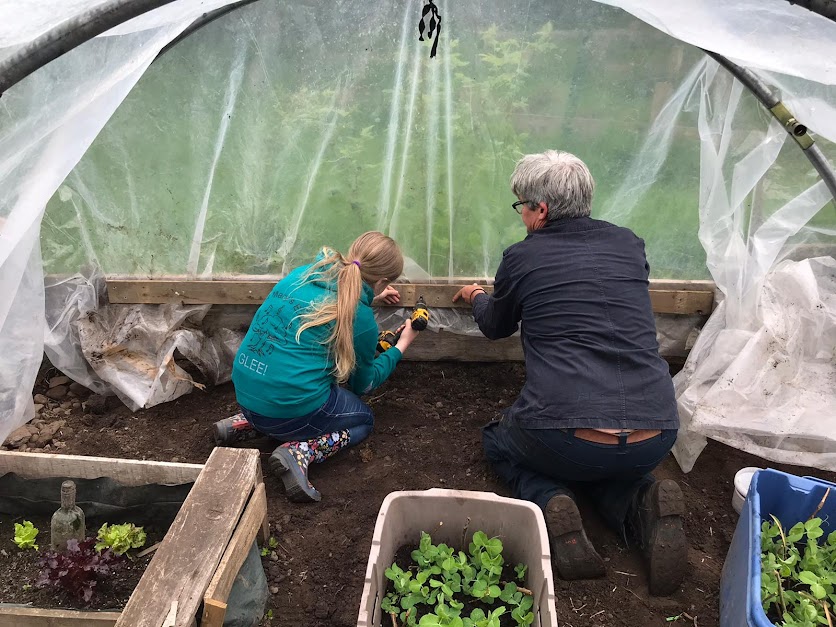
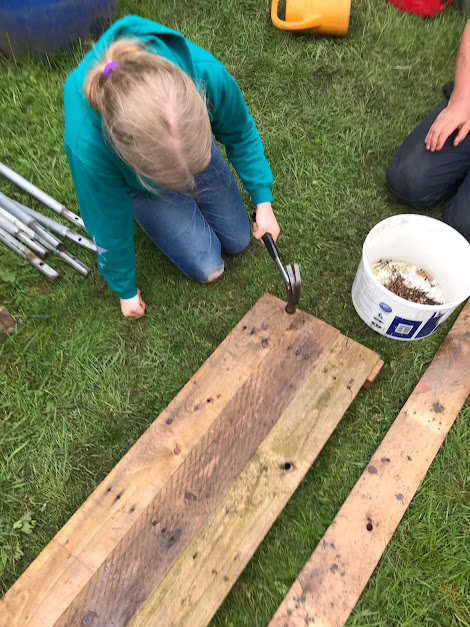
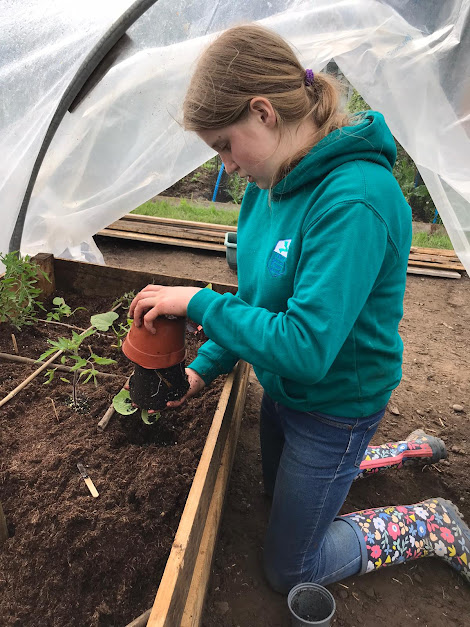
Little Bugs outdoor nursery now has a poly tunnel for really inclement weather and to grow some tomatoes and other heat loving plants. It’s not finished…..
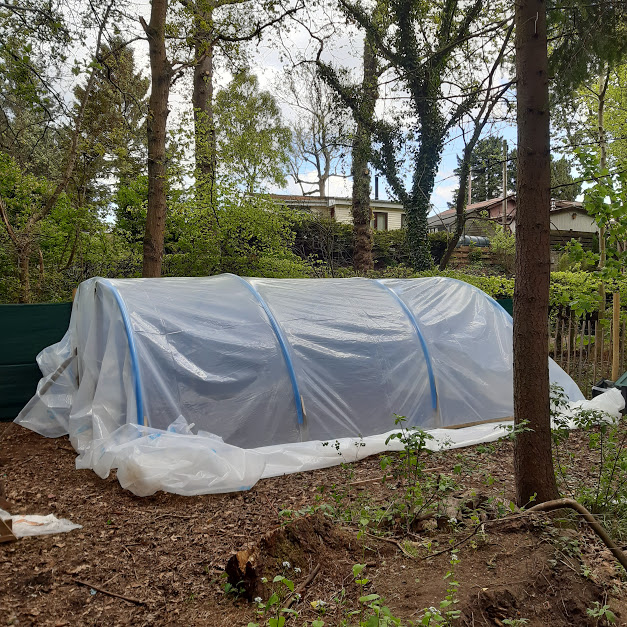
March, April and May are super-busy
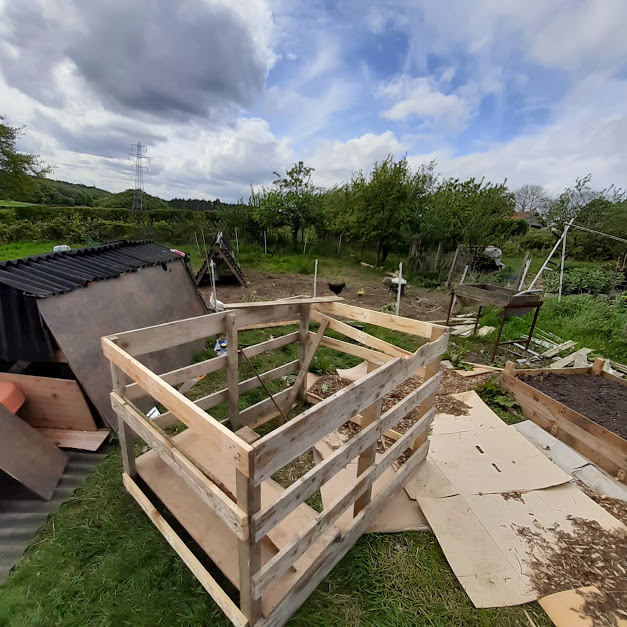
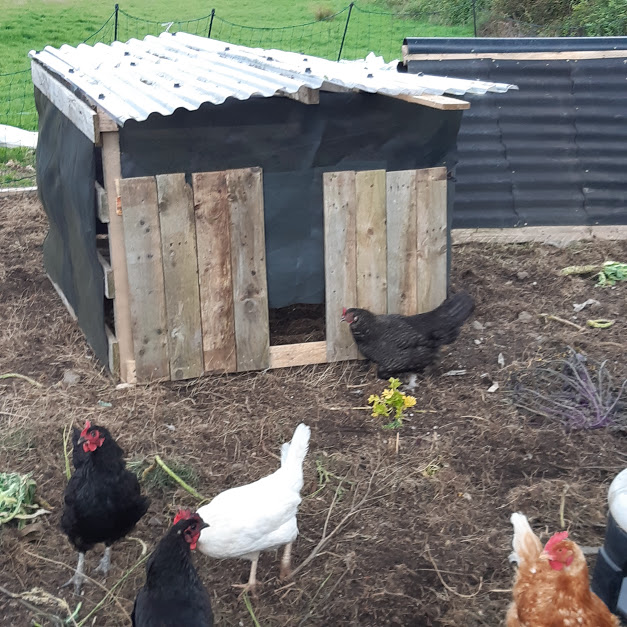
The original hen house has passed it’s use-by date and a new one has been erected. Pallet wood for the sides, covered with trampoline mat to allow some air flow, a rollaway nesting box and skids to make it easy (easier) to move.
The hens seem to like it.
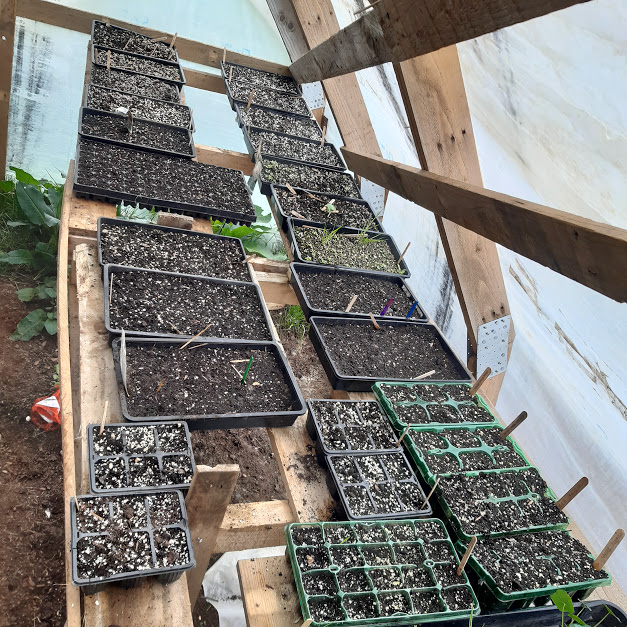
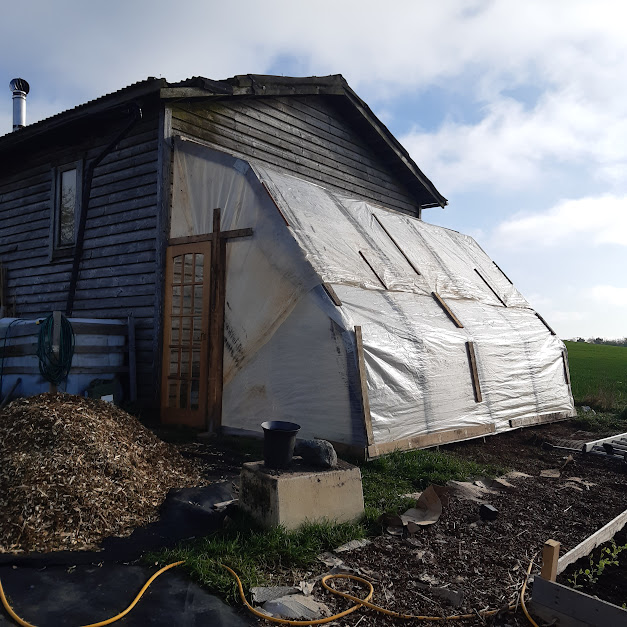
The design and construction was helped by the Home Educated children and is now in full swing with staging made from pallets covered in trays. The plastic is not as clear and does not let as much heat in as the main polytunnel but it’s perfect for seedlings
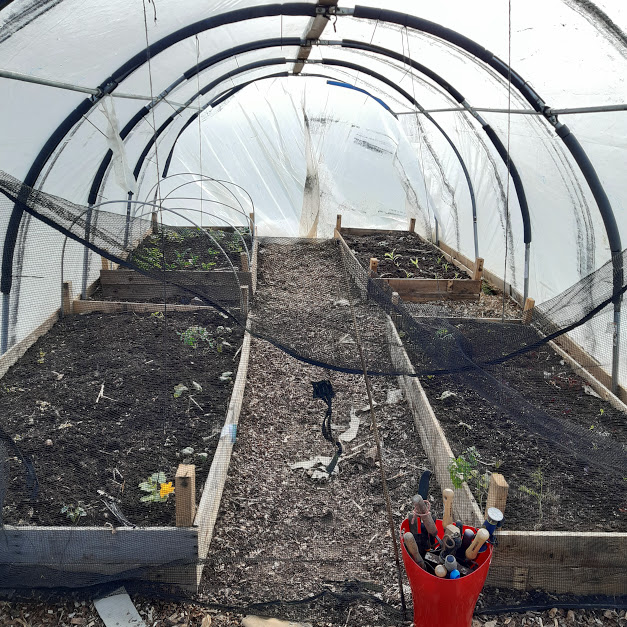


Probably the most fun to put up using discarded 10ft trampolines, donated plastic and raised beds made with pallet wood. It needs a little more work. This space is managed by the Home Educated children, and the poly tunnel is technically portable, hence the huge blocks holding it down.


The nets that keep the children from falling off the trampoline are ideal for beds to keep off chickens, butterflies and slow down the wind. The legs that hold up the trampoline, when inverted are perfect hoops for netting or fleece.
